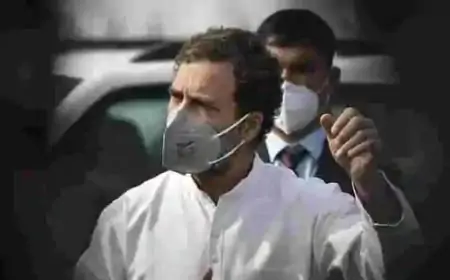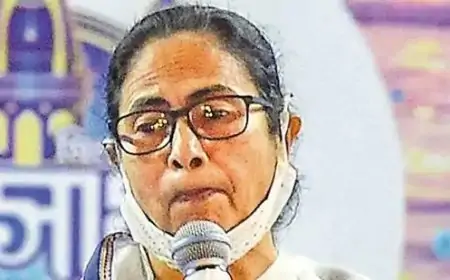Jai Shri Ram has become a mudradosh (a catchphrase) for us”, said a voter, belonging to the Matua community, in Thakurnagar, West Bengal. “We started using it to tease the Trinamool, but now it has become as natural as saying good morning in English.” When asked how Jai Durga or Jai Kali — associated more deeply with Bengal — hadn’t, instead, become the rallying cry, he responded, “Ram is as familiar to us as you.”
As West Bengal heads to the polls, it is at the intersection of changing cultural contours, shifting political dynamics and contested identity claims. Identity is always a two-way process. A particular mode of recognition by a group requires others to endorse it. Thus, the claim that Bengal is the intellectual-heartland of India is shared by a vast section of non-Bengalis, thereby constituting the image of the state being different. Irrespective of the changing political context in the last four decades, from the Left Front to Trinamool Congress (TMC) rule, the Bhadraloks (the cultural elite) have been fierce custodians of Bengal’s sense of exceptionalism and guarded it passionately. For instance, a quintessential Bhadralok would condemn and lament the rising assertive religiosity in other parts of the country while defending Durga Pujo in Bengal primarily as a social gathering.
However, since 2018, political shifts and social changes, particularly among the subaltern sections in rural and mofussil Bengal, have raised questions about the Bhadralok sense of entitlement in representing and speaking for the state. What Bengal is witnessing is a new wave of subaltern assertion, using the instrument of Hindutva to push the narrative.
The growing political and cultural salience of the Jai Shri Ram slogan in Bengal was reflected in three key moments — first, during the 2018 communal riot in Asansol on the occasion of Ramnavami; second, as chanted by people when chief minister Mamata Banerjee’s motorcade passed through Chandrakona in West Midnapore and Bhatpara in North 24 Parganas in May 2019; and, finally, on January 23, when the slogan was raised in the presence of Prime Minister Narendra Modi and Banerjee during the celebration of Subhas Chandra Bose’s birth anniversary in Kolkata.
The Bhadralok response to the slogan has been one of unease. It claims that the slogan has never been a part of Bengal’s religiosity and is almost alien to the land, and therefore, those invoking must be the migrants from neighbouring states. These incidents are also seen as the handiwork of the Bharatiya Janata Party (BJP). However, a closer look would reveal that this argument, defending the specificity of Bengali religiosity and shifting the blame entirely to the BJP and migrants is not only untrue, but also fails to take into account the role played by the TMC. It also ignores ground realities.
After having travelled through all 294 assembly constituencies in the state, four ground realities become apparent.
One, the BJP, outside Kolkata, is organisationally weak and, even after a spree of defections from the incumbent, lacks strong local leadership. Two, an overwhelming majority of Hindus are polarised against the TMC, allegedly on account of rampant corruption and systemic violence by the ruling party’s rank and file in connivance with the state police. Three, it is primarily the erstwhile supporters of the Left who have been at the receiving end of the TMC’s excesses, and are now clamouring for “revenge”. And, finally, barring few pockets such as parts of Murshidabad, Malda and Dinajpur, both the Left and the Congress are not considered as credible alternative by pro-change voters. Thus, the BJP has become the default beneficiary of the existing resentment against the TMC.
Even a cursory look at the intersection of these facts shows that the salience of the slogan has deeper roots. If the BJP is so weak outside Kolkata, crediting it, albeit negatively, with the ability to provoke citizens in different parts of the state to mock, challenge, and finally bear the brunt of the chief minister’s anger, by chanting Jai Shri Ram, doesn’t add up. The search for the underlying forces behind the slogan should be directed at the social realm and the role played by the TMC itself.
Travels on the ground, primarily the interiors of south Bengal, reveal the everydayness of Jai Shri Ram greetings, chants and sloganeering among a vast section of Bengalis who are opposed to the TMC.
For instance, respondents across castes at Chowkbazar in Balrampur assembly constituency in Purulia defended the slogan as a way of getting back at the TMC supporters — and alleged that the district president of the TMC ridiculed their sentiment by asking who is Ram. A school teacher at Bishnupur claimed Ram to be an integral part of everyday life, and argued how Ramayana is inscribed even in the world famous Baluchari silk sarees. At Habra in N orth 24 Parganas, a group of respondents expressed their anger at the government arresting some people for using the slogan. Ironically, in most of these places, then same people lamented the poor organisational profile of the BJP.
The story of Jai Shri Ram goes beyond the BJP in Bengal. It has become a code of solidarity, a way of greeting, and a signal of anti-TMC consolidation. And it has become an everyday tool of political demarcation not only against the TMC but also against the patronising attitude of the old elites who privilege ideology over the everyday precarious experience of the subalterns. It signifies the fusion of the subaltern with Hindutva against the worldviews of Bhadraloks.
Sajjan Kumar is a political analyst associated with Peoples Pulse
The views expressed are personal






![[WATCH VIDEO] Kristina Koko In India Viral Video Story - Download Video Showing her Private Parts [WATCH VIDEO] Kristina Koko In India Viral Video Story - Download Video Showing her Private Parts](https://www.sociallykeeda.com/uploads/images/202402/image_140x98_65bdef6f1a7a4.webp)

![[WATCH VIDEO] Areeka Haq (14th) Valentine Video Leaked Scandal: Is It On Instagram, Youtube, Telegram [WATCH VIDEO] Areeka Haq (14th) Valentine Video Leaked Scandal: Is It On Instagram, Youtube, Telegram](https://www.sociallykeeda.com/uploads/images/202402/image_140x98_65d349d7732e5.webp)